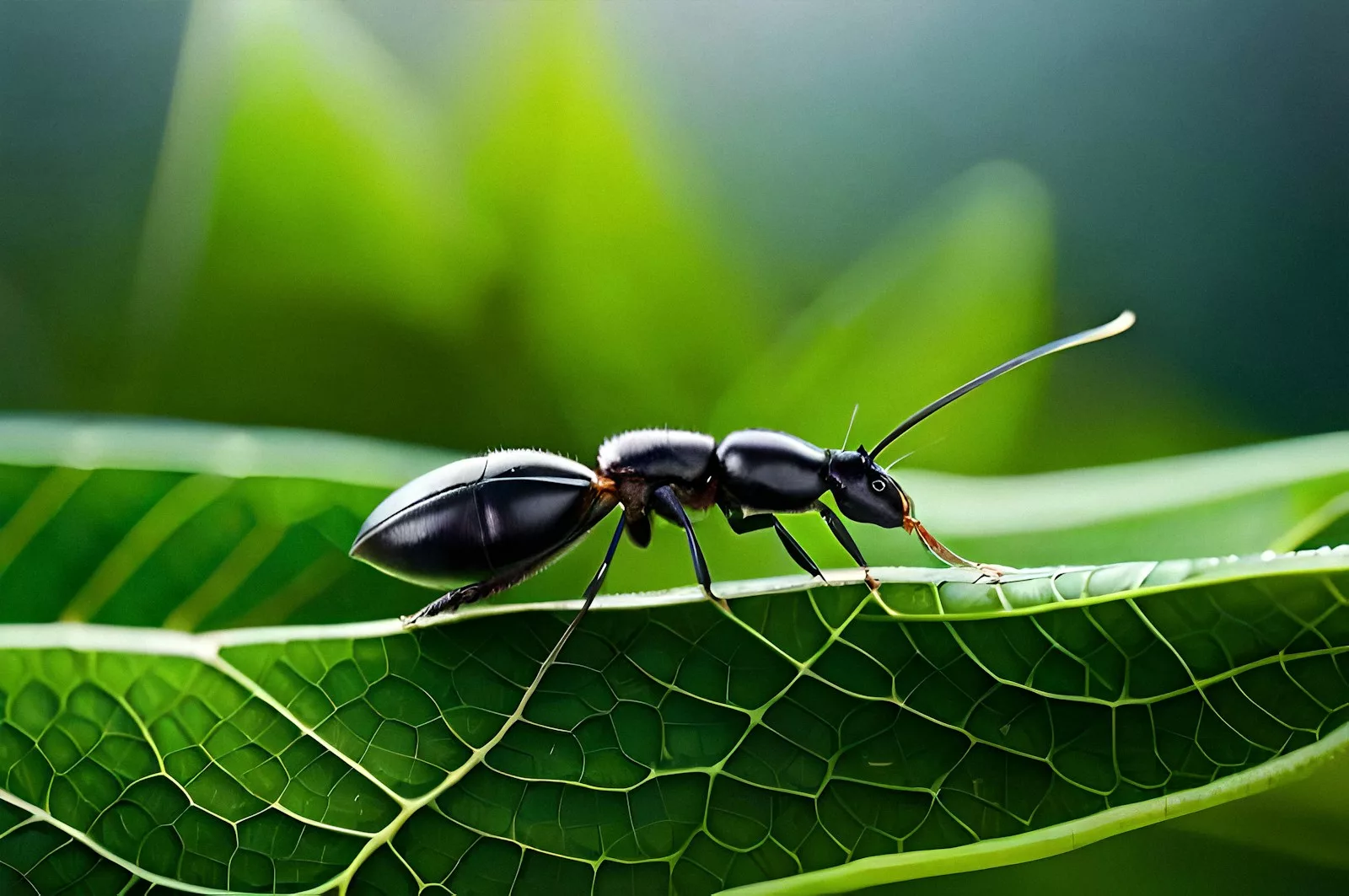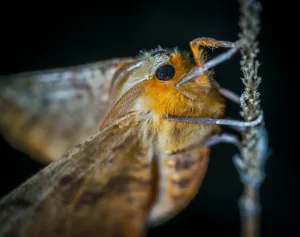Ants are some of the most fascinating creatures on the planet, yet they often go unnoticed in our daily lives. These tiny insects have extraordinary abilities that rival even the most advanced human systems, from their intricate societies and impressive strength to their incredible adaptability. Found almost everywhere on Earth, ants play vital roles in ecosystems and have evolved to thrive in ways that can leave us awestruck.
Despite their size, ants demonstrate teamwork, innovation, and survival strategies that are nothing short of remarkable. In this article, we’ll dive into 15 mind-blowing facts about ants, uncovering their hidden talents and surprising traits that will change how you think about these tiny creatures.
1. Ants Can Lift 10-50 Times Their Own Body Weight
Ants are often celebrated for their astonishing strength. Depending on the species, an ant can lift anywhere from 10 to 50 times its own body weight. This incredible power comes from their small size, as their muscles are proportionally larger relative to their body mass compared to larger animals. This gives them a mechanical advantage, allowing them to perform feats of strength that would be impossible for most creatures.
Their strength serves a practical purpose, enabling them to carry food back to the colony, build intricate nests, or even drag predators or rivals away from their territory. Watching ants work together to move a massive load can feel like observing a well-coordinated construction team, a testament to their physical capabilities and social organization.
2. Ants Have Been Around for Over 100 Million Years
Ants are evolutionary survivors, with fossil evidence indicating they’ve existed for over 100 million years. They lived alongside dinosaurs, weathered mass extinctions, and adapted to a wide range of environments. Their longevity is a testament to their ability to evolve and thrive under changing conditions.
Their success is largely due to their social behavior and adaptability. By working together and exploiting diverse habitats, ants have managed to colonize nearly every part of the world. Their ability to form complex societies and adapt to different ecosystems has cemented their place as one of nature’s most enduring species.
3. Ant Colonies Operate Like Superorganisms
An ant colony functions as a single superorganism, with each ant playing a specific role that contributes to the survival and efficiency of the group. Worker ants forage for food, care for the queen’s brood, and maintain the nest, while soldier ants defend the colony from threats. The queen’s sole responsibility is reproduction, ensuring the colony’s growth and continuity.
This division of labor is guided by chemical signals called pheromones, which allow ants to communicate and coordinate tasks seamlessly. The colony’s collective intelligence enables it to solve problems, adapt to environmental challenges, and function as a cohesive unit, much like the organs of a living body.
4. Ants Outnumber Humans by the Trillions
It’s estimated that there are over 20 quadrillion ants on Earth, vastly outnumbering the human population. For every human, there are approximately 2.5 million ants. This staggering number highlights their ecological dominance and widespread presence.
Ants play critical roles in ecosystems, from aerating soil and decomposing organic material to serving as prey for other animals. Their vast population and interconnected colonies make them one of the most influential organisms on the planet, demonstrating how small creatures can have an enormous impact.
5. Some Ant Species Farm Their Own Food
Certain ant species, like leafcutter ants, practice agriculture by cultivating fungi as their primary food source. These ants collect leaves, which they chew into a pulp to create a substrate for the fungi to grow. In return, the fungi provide a sustainable and nutritious food supply for the colony.
This mutualistic relationship showcases the ants’ ingenuity and foresight. Leafcutter ants have been farming for millions of years, long before humans began cultivating crops. Their sophisticated farming techniques highlight their ability to manipulate their environment to meet their needs.
6. Ants Can Build Structures That Rival Human Architecture
Ants are master builders, capable of constructing elaborate nests with chambers, tunnels, and ventilation systems. Some species, like African termites (close relatives of ants), create towering mounds that can reach heights of up to 30 feet, complete with temperature-regulating mechanisms.
These structures are built without centralized planning, relying instead on the collective behavior of the colony. Each ant contributes to the construction process by following simple rules, resulting in a complex and efficient habitat. Their architectural feats are a testament to the power of teamwork and decentralized problem-solving.
7. Ants Use Chemical Warfare
Ants are equipped with chemical weapons to defend themselves and their colonies. Fire ants, for instance, inject venom through their stingers, causing pain and irritation to predators. Other species, like the Formica ant, spray formic acid to deter attackers and mark territory.
These chemical defenses aren’t just for self-protection—they also help ants compete with rival colonies and predators. Their ability to produce and deploy these weapons underscores their advanced evolutionary adaptations, ensuring their survival in hostile environments.
8. Ants Have a Global Presence
Ants are found on every continent except Antarctica, thriving in environments ranging from deserts to rainforests. Their incredible adaptability allows them to survive in extreme conditions, whether it’s intense heat, freezing temperatures, or limited food supplies.
This global presence speaks to their resilience and resourcefulness. Their ability to colonize diverse habitats makes them one of the most successful groups of organisms on Earth, playing a vital role in ecosystems worldwide.
9. Some Ants Can Create Living Rafts
In flood-prone areas, certain ant species, like fire ants, form living rafts by linking their bodies together. These rafts float on water, protecting the queen and the colony’s brood while allowing the ants to relocate to safer ground.
This behavior demonstrates remarkable teamwork and adaptability. By working together as a unified entity, ants can overcome environmental challenges and ensure the survival of their colony, even in the face of natural disasters.
10. Ants Have Two Stomachs
Ants have two stomachs, one for digesting their own food and another for storing food to share with their nestmates. This process, known as trophallaxis, enables ants to distribute nutrients throughout the colony, ensuring that even those who don’t forage receive sustenance.
This communal feeding system strengthens the social bonds within the colony and highlights the importance of cooperation in ant societies. It’s a striking example of how ants prioritize the collective well-being over individual needs.
11. Ants Communicate Through Pheromones
Ants have developed a sophisticated method of communication using pheromones, chemical signals that help them coordinate activities and share vital information. For instance, when a forager ant finds food, it releases a pheromone trail that guides other ants to the source. This trail is reinforced as more ants follow it, creating an efficient system for resource gathering.
Pheromones also serve other purposes, such as marking territory, signaling danger, or even identifying colony members. This chemical language allows ants to function as a highly organized group, capable of executing complex tasks like foraging, nest building, and defending their colony. The precision of their communication system has even inspired algorithms in robotics and computer science.
12. The Queen Can Live for Decades
In most ant colonies, the queen has a remarkably long lifespan compared to worker ants. While workers may only live for a few months, the queen can live for up to 30 years in some species. Her longevity allows her to lay millions of eggs throughout her lifetime, ensuring the growth and survival of the colony.
The queen’s role is central to the colony’s success. She does not participate in daily tasks like foraging or defense but focuses solely on reproduction. Her extended lifespan and reproductive capabilities make her the cornerstone of the ant colony, a unique biological trait that sets ants apart from many other insect species.
13. Some Ants Keep “Cattle”
Certain ant species, such as yellow meadow ants, engage in a symbiotic relationship with aphids, treating them almost like livestock. These ants protect aphids from predators and move them to better feeding spots on plants. In return, the aphids secrete a sugary substance called honeydew, which the ants harvest as a food source.
This mutualistic relationship benefits both species and showcases the ingenuity of ants in forming partnerships with other organisms. By “farming” aphids, ants secure a reliable food supply while providing the aphids with protection, demonstrating a level of resource management rarely seen in the insect world.
14. Ants Can Recognize Their Reflection
Certain ant species have shown signs of self-awareness in experiments involving mirrors. Researchers observed that ants could recognize their reflection and even use it to groom themselves or remove markings placed on their bodies. This behavior suggests a level of cognitive complexity that is rare among insects.
While more research is needed to fully understand this phenomenon, it provides fascinating insights into the potential intelligence of ants. Their ability to exhibit self-recognition challenges traditional views of insect behavior and raises intriguing questions about their mental capabilities.
15. Ants Have “Warrior” Species
Some ant species, such as army ants, are known for their aggressive and highly coordinated hunting strategies. Army ants form massive, mobile colonies that sweep through areas in organized raids, consuming everything in their path, from insects to small animals. Their sheer numbers and synchronized movements make them one of nature’s most formidable predators.
These warrior ants demonstrate the power of collective action. Each individual ant plays a specific role, from scouting to attacking, ensuring the efficiency of the raid. Their behavior showcases the incredible adaptability and strength of ant societies, highlighting their dominance in the natural world.
Conclusion
Ants may be small, but their capabilities and behaviors are nothing short of extraordinary. From their unparalleled strength and advanced communication methods to their agricultural practices and architectural feats, ants demonstrate the ingenuity and resilience of nature. These 15 mind-blowing facts reveal the complex and fascinating world of ants, offering a deeper appreciation for their role in ecosystems and the lessons they provide in cooperation, adaptability, and survival. The next time you encounter an ant, remember—they’re far more than just tiny insects; they’re tiny marvels of the natural world.




